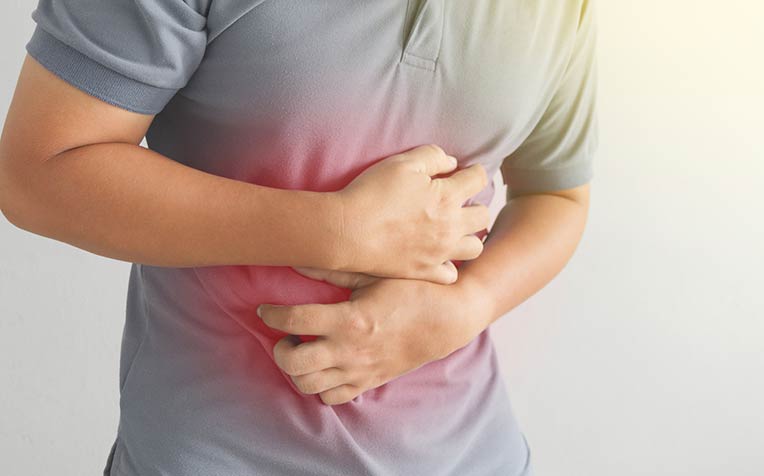HealthXchange will NEVER ask you to transfer money over a call. If in doubt, call the 24/7 ScamShield helpline at 1799, or visit the ScamShield website at www.scamshield.gov.sg.

Appendicitis or inflammation of the appendix often appears as a constant pain of the lower right abdomen.
Appendicitis or inflammation of the appendix affects five to seven per cent of the general population, across all age groups.
At the early stages, the symptoms of appendicitis may be mild and confused with indigestion or stomach flu, as the pain usually starts from the navel or upper abdomen. Over time (usually within 1 or 2 days), the abdominal pain will usually worsen significantly and localise to the right lower abdomen.
“Appendicitis or inflammation of the appendix warrants immediate surgical attention as the appendix is prone to rupture and this can cause a life-threatening bacterial infection of the body,” says a specialist from the Department of Hepato-pancreato-biliary and Transplant Surgery, Singapore General Hospital (SGH), a member of the SingHealth group.
What is the appendix?
The appendix is a worm-like appendage that is attached to the caecum, the first section of the large intestine. Measuring 4-10 cm, the human appendix has no vital function.
Symptoms of appendicitis
Besides constant lower right abdominal pain, appendicitis or inflammation of the appendix can lead to symptoms such as:
- Loss of appetite
- Nausea and vomiting
- Mild fever
- Abdominal swelling and tenderness
Causes of appendicitis
Appendicitis or inflammation of the appendix is caused by a bacterial infection which attacks the appendix wall. The inflammation may also be caused by a blockage such as hardened stools or mucus lodged in the appendix. Very often, the cause of the inflammation is not known or may not be identified.
Diagnosing appendicitis
The diagnosis of acute appendicitis is usually made clinically, and doctors in the primary care setting or emergency setting are well-versed with its classical signs and symptoms.
Diagnosing appendicitis among the elderly, young children and pregnant women can sometimes be difficult. Nausea and vomiting are common symptoms among pregnant women, while the elderly often experience mild abdominal pain which can be attributed to other causes. In the case of young children, they may not be able to articulate their symptoms, which can delay the diagnosis. A physical examination to locate the site of the abdominal pain is important in diagnosing appendicitis. The vast majority of diagnosis of acute appendicitis is made by clinical assessment without specialised tests. Blood tests or a CT scan may follow to confirm the diagnosis.
Dangers of appendicitis
Seek treatment early because if the appendix ruptures, an abscess may form and bacteria may spread to the entire abdomen, causing a serious condition called peritonitis, an inflammation of the abdominal wall lining.
Very young children (aged two and below) and the elderly (aged 70 and above) are also at higher risk for a ruptured appendix.
Read on to learn about treatment for appendicitis (inflammation of the appendix).
Contributed by
Public Events
Get the Health Buddy App
© 2025 SingHealth Group. All Rights Reserved.















 Get it on Google Play
Get it on Google Play